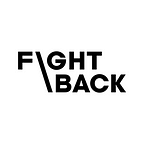At FightBack, we’re always interested in learning more about new technologies and innovations when it comes to climate, sustainability, and health. Today, we’ve put some research into how web3 relates to our global climate crisis and how it can help solve it, even just a bit at a time. If you’re new to the crypto space, we’ve included a section with useful links at the bottom of this article to help sort through the conversation. We hope you’ll find some new ideas and inspirations.
First, we see an immense increase in everything web3. Not only the rebranding of Facebook to Meta and ensuring our parents or non-tech friends are up to date on the thing called “metaverse”, but also, large (crypto) VCs, like a16z, have put up an incredible $2.2 billion Crypto Fund III back in mid-2021. Overall, we see the total VC investments in crypto peaking to a new ATH at ~$30 billion in 2021 alone.
In parallel, we see NFTs booming as the NFTs sales went up to $25 billion in 2021. The market is reaching a new ATH (all-time-high), with blue-chip NFTs like BAYC (Bored Ape Yacht Club) crossing the magical mark of 100 ETH floor price per token on Opensea. Furthermore, web3 user statistics prove the increasing adoption rate based on 21 million unique Metamask users from 5 million back in April 2021 (240%+)
But how is that related to climate / ReFi (=Regenerative Finance)
Today, we see an increase in use cases and climate-related projects that focus on web3 & blockchain infrastructure to tackle climate change and finance-related projects while incentivizing their investors and token holders. This comes with a long range of projects from preserving forests and protecting their biodiversity (e.g. Single.Earth) to DAOs (Decentralized Autonomous Organizations) disrupting the CO2 certificate market like KLIMA DAO, which set the stage in Q4 2021 with its carbon-backed currency. Since last October it had a crazy ride as we’ve seen with many other DAO projects and the overall crypto market, skyrocketing to new highs and being massively down at the moment. Nonetheless, Klima DAO’s mission is to drive the appreciation of carbon assets higher by purchasing carbon credits from the market based on a community-funded approach.
The patterns and mechanisms most projects follow can be described in three key areas:
1. Pooling capital & financing climate action
Just as described with the Klima DAO example, these organizations provide an infrastructure and community-driven approach to pool massive financial resources, mainly from retail investors and climate-conscious individuals, to act as one heavy-weight stakeholder on the market and generate an additional capital inflow into long-term projects that have the potential to invent breakthrough solutions tackling the hardest-to-avoid carbon emission. Members of the DAO, its KLIMA token holders, hold power to vote on the governance of KlimaDAO’s treasury and the DAO’s roadmap ahead.
Other examples are the Mangroves NFT collection funds aiming to grow100 million mangroves. Whalez is a limited NFT collection that funds organizations removing plastic from the ocean. Eden DAO aims to fund carbon removal projects and purchase future carbon credits.
2. Get nature-based assets on-chain
Next to providing the financial infrastructure, other projects focus on the frontier of bridging web3 with the real world, mainly with a focus on carbon credits. Toucan Protocol, for example, brings carbon credits on-chain and pools tokenized carbon into index pools. Single.Earth adds biodiversity metrics in addition to carbon in their unique token. Finally, Regen Network puts a focus on ecological and social co-benefits, such as soil health, ecosystem health, and animal welfare.
3. Trust-building mechanism for the carbon market
Using the blockchain infrastructure generally provides several benefits in comparison to the usual web2 and cloud infrastructure including speed, transparency, and security. Especially transparency is key when looking into the carbon market and verifiability along value chains. Currently, especially the voluntary carbon markets suffer from major problems like double-counting, where the actual reduction or removal of greenhouse gases is counted twice or even more for the same credit, as well as transparency and trustworthiness. One of the solutions will include receiving all the transactions, verifications, and time-stamps recorded on the blockchain thus, it becomes almost impossible to tamper with the data. For example, Open Forest Protocol uses satellite data to monitor the forests where the carbon credits originate.
A list of some web3-related climate projects and useful links to read further in random order:
- The Eden DAO
- Klima DAO & Planet of the Klimates Podcast
- dclimate
- likvidi
- Regen Network
- … a growing directory of climate-related projects
About blockchain, crypto, token, web3, nft …
- Voluntary Carbon Market
- Blockchain explained
- Web3 explained: it’s a new paradigm in the world of internet. It revolves around decentralization of computing and ownership of digital and real-world assets.
- NFT explained
- Decentralized finance (Defi) explained
About FightBack:
FightBack is a non-profit organization and international community of entrepreneurs, investors, executives, and NGOs joining forces for a healthy planet with healthy people. (Link website)
About Dr. Earth:
Dr. Earth is a unique alliance of health & nutrition actors, corporations, non-profits, retailers, insurers, sub-national actors, and entrepreneurs with the goal to empower 10 million people in Germany by 2025 to transition towards sustainable and healthy nutrition based on the EAT-Lancet Planetary Health Diet (“PHD”). (Link website)
COMMUNICATION & INTERACTION CHANNELS
Website: https://joinfightback.com/
FightBack Slack: Community platform, networking & collaboration groups
FightBack Medium: Public announcements & impact opportunities
FightBack Twitter: @FightBack_TWR
FightBack Newsletter: bi-weekly news to your inbox
Contact team: enguard [at] joinfightback.com (or via Slack directly)
